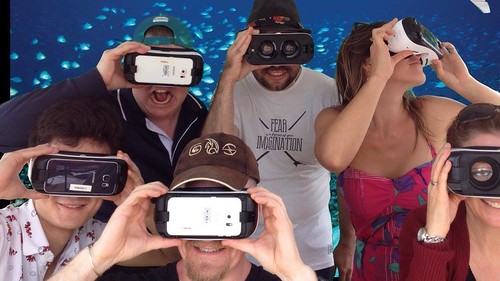Community Citizen Science to Make this World a Better Place
Tomasz Bednarz on March 1, 2020By the end of 2020, there will be six billion internet-connected smartphones used daily [1]. Can we use connected devices to hear community voice and make this World a better place. How we can do it? By using Community Citizen Science (CCS) to gather new data, and Human-Computer Interaction (HCI) to build intuitive user interfaces that everyone can understand, and be able by doing so contribute data [2].
I become fascinated by disruptive potential of citizen science in 2015, being part of research team that sent group of researcher into the Peruvian Amazon to aid the conservation of jaguars [3]. We started really by sending small group that ventured through wild jungle capturing 360-degrees photographs and movies everywhere, mapping those on the map as pins. The 360-photographs were then presented to experts in jaguar population and also local tribes to estimate probability of jaguars’ presence in those particular locations. This information was used to develop predictive models about location/abundance of jaguars and how they are faring, and share this information with big cat charity organisations. You can watch snapshots from the trip at https://www.youtube.com/watch?v=5a_qJlSzMNg or click on image below.
The research team I was part of, started thinking how powerful it was to build predictive analytics engine based on data captured by group of scientists, and analysed by people who were located at their universities in Australia and France. To keep improving the predictions, sets of mobiles and 360-cameras were purchased and left with the local tribes to add to data whenever they could.
Expansion of the tools developed during the first research trip, was attacking problems on monitoring health of the Great Barrier Reef (GBR). Imagine diving in a GBR location, and capturing lots of photographs underwater. After getting back to the boat, uploading them to the central server. Imagine now, that data is collected exactly the same way by all tourists visiting GBR. Next step, would be to analyse imaging-data seeking for bleaching and cyclones damage effects. Data would be added to existing professional data sets, and thus, “effective integration of professional and high-volume citizen data could enhance the capacity and cost-efficiency of monitoring programs. This general approach is equally viable for other variables collected in the marine environment or other ecosystems; opening up new opportunities to integrate data and provide pathways for community engagement/stewardship”. Data could be analysed using VR technology, especially when recorded as 360-degrees photographs or movies.

To effectively scale up the impact of such tools, we need to actively work on integrating citizen science and community-based participatory research. Citizen science could inform and influence policies, and improved decision making. Citizen science could also help to fill up the gaps in data (as in my GBR example). This technology could potentially open new ways of attacking various problems intersecting multiple sectors, ranging from health, education, environment, justice, conservation. To enhance privacy components, blockchain technology could be integrated while building the CCS platforms.
Using mobile technology and Power of People (Citizen Science platform) is our chance to Make this World a Better Place!
References
-
World Economic Forum (2020) Citizen Science can help solve our data crisis. Website: https://www.weforum.org/agenda/2019/03/citizen-science-can-help-solve-our-data-crisis.
-
Hsu, Y., Nourbakhsh, I. (2020) When Human-Computer Interaction Meets Community Citizen Science. Communications of the ACM, Vol. 64, No. 2, pp. 31-34.
-
Bednarz, T., Kim, J., Brown, R., …, Vercelloni, J. (2017) Virtual Reality for Conservation. Web3D, Anahaim. Link: https://www.researchgate.net/publication/305421414_Virtual_reality_for_conservation.
-
Peterson, E., …, Bednarz, T., Mengersen, K. (2019) Monitoring through many eyes: integrating datasets to improve monitoring of the Great Barrier Reef. Link: https://doi.org/10.1016/j.envsoft.2019.104557.
